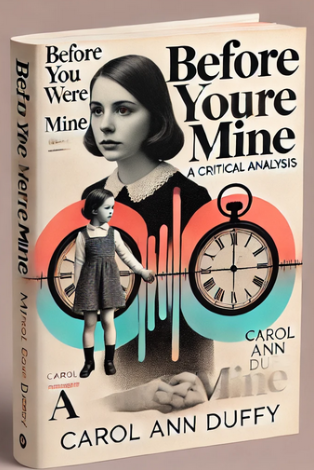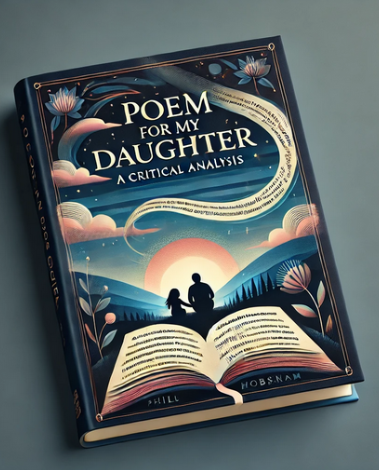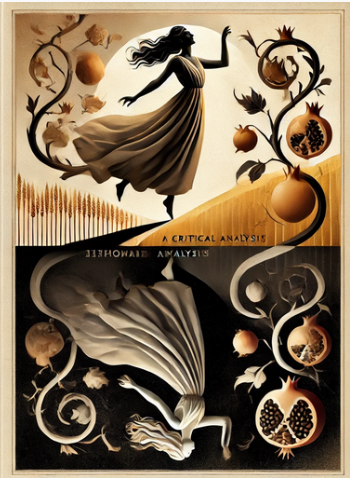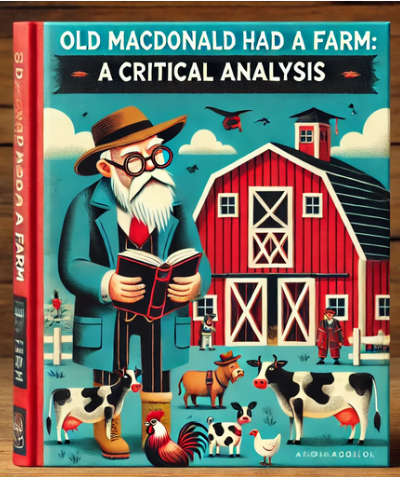
Introduction:“Before You Were Mine” by Carol Ann Duffy
“Before You Were Mine” by Carol Ann Duffy, first appeared in her 1993 poetry collection Mean Time, explores themes of memory, identity, and maternal love through a deeply personal and imaginative lens. Duffy nostalgically reflects on her mother’s vibrant youth before the poet’s own existence, blending admiration, longing, and possessiveness in her tone. The work is notable for its vivid imagery, such as the comparison of her mother to Marilyn Monroe, symbolizing glamour and carefree vitality. Its popularity stems from its universal themes of family and the way it captures the poignant transition from the freedom of youth to the responsibilities of motherhood, resonating with readers across generations.
Text: “Before You Were Mine” by Carol Ann Duffy
I’m ten years away from the corner you laugh on
with your pals, Maggie McGeeney and Jean Duff.
The three of you bend from the waist, holding
each other, or your knees, and shriek at the pavement.
Your polka-dot dress blows round your legs. Marilyn.
I’m not here yet. The thought of me doesn’t occur
in the ballroom with the thousand eyes, the fizzy, movie tomorrows
the right walk home could bring. I knew you would dance
like that. Before you were mine, your Ma stands at the close
with a hiding for the late one. You reckon it’s worth it.
The decade ahead of my loud, possessive yell was the best one, eh?
I remember my hands in those high-heeled red shoes, relics,
and now your ghost clatters toward me over George Square
till I see you, clear as scent, under the tree,
with its lights, and whose small bites on your neck, sweetheart?
Cha cha cha! You’d teach me the steps on the way home from Mass, stamping stars from the wrong pavement. Even then
I wanted the bold girl winking in Portobello, somewhere
in Scotland, before I was born. That glamorous love lasts
where you sparkle and waltz and laugh before you were mine.
Annotations: “Before You Were Mine” by Carol Ann Duffy
| Line | Annotation |
| I’m ten years away from the corner you laugh on | The speaker imagines her mother’s youth a decade before her own birth, painting a scene of carefree joy and camaraderie, emphasizing the temporal distance between them. |
| with your pals, Maggie McGeeney and Jean Duff. | The mention of specific names personalizes the narrative, grounding the memory in realism and evoking a sense of shared experiences among friends. |
| The three of you bend from the waist, holding each other, or your knees, and shriek at the pavement. | This imagery vividly portrays the exuberance and unrestrained laughter of youth, highlighting the lightheartedness of her mother’s past life. |
| Your polka-dot dress blows round your legs. Marilyn. | The comparison to Marilyn Monroe evokes glamour, beauty, and confidence, presenting the mother as a figure of vitality and allure. |
| I’m not here yet. The thought of me doesn’t occur | The speaker emphasizes her absence, underlining how her mother’s life was free from parental responsibilities and filled with possibility. |
| in the ballroom with the thousand eyes, the fizzy, movie tomorrows | The ballroom imagery suggests romance and social excitement, while “fizzy, movie tomorrows” conveys a sense of hope and glamour in her mother’s future. |
| the right walk home could bring. | This phrase hints at the unpredictability of life and relationships, where even a simple decision like choosing a path could lead to life-changing outcomes. |
| I knew you would dance like that. | The speaker imagines her mother’s vibrancy and passion, connecting it to her own sense of admiration and pre-birth intuition. |
| Before you were mine, your Ma stands at the close with a hiding for the late one. | The reference to her grandmother reprimanding her mother contrasts youthful freedom with parental discipline, creating a cyclical theme of generational relationships. |
| You reckon it’s worth it. | The rebellious tone captures the mother’s carefree attitude, valuing joy and independence over rules. |
| The decade ahead of my loud, possessive yell was the best one, eh? | The speaker acknowledges that her birth ended her mother’s carefree youth, with a possessive and ironic tone reflecting guilt and ownership. |
| I remember my hands in those high-heeled red shoes, relics, | The image of red shoes symbolizes glamour and the tangible remnants of her mother’s past, suggesting nostalgia and longing. |
| and now your ghost clatters toward me over George Square | The mention of a ghost signifies how the mother’s youthful self feels distant and almost intangible, emphasizing the passage of time. |
| till I see you, clear as scent, under the tree, | The use of “scent” highlights the power of sensory memory, making the mother’s younger self vividly present in the speaker’s imagination. |
| with its lights, and whose small bites on your neck, sweetheart? | This intimate detail implies romantic encounters, hinting at the mother’s vibrant love life, now a source of curiosity for the speaker. |
| Cha cha cha! You’d teach me the steps on the way home from Mass, | The playful tone of “Cha cha cha!” contrasts religious routine with the mother’s lively and irreverent spirit, showcasing her multifaceted personality. |
| stamping stars from the wrong pavement. | This metaphor captures the idea of creating beauty and joy in unexpected or unconventional places, symbolizing the mother’s boldness and creativity. |
| Even then I wanted the bold girl winking in Portobello, somewhere in Scotland, before I was born. | The speaker expresses admiration for her mother’s spirited, adventurous persona, suggesting a desire to connect with the mother’s youthful identity. |
| That glamorous love lasts where you sparkle and waltz and laugh before you were mine. | The poem concludes with an affirmation of the mother’s enduring vitality, immortalized in the speaker’s imagination, and the acknowledgment of the unbridgeable gap between her mother’s youth and her role as a parent. |
Literary And Poetic Devices: “Before You Were Mine” by Carol Ann Duffy
| Device | Example | Explanation |
| Alliteration | “stamping stars” | The repetition of the initial “s” sound emphasizes the rhythmic, playful imagery of the mother dancing, contributing to the energetic tone. |
| Ambiguity | “whose small bites on your neck, sweetheart?” | This phrase introduces ambiguity about the mother’s romantic past, sparking curiosity in the speaker and the reader about her life before motherhood. |
| Caesura | “The decade ahead of my loud, possessive yell was the best one, eh?” | The pause created by the comma after “eh?” reflects the speaker’s contemplative tone, inviting reflection on the contrast between past and present. |
| Colloquialism | “reckon it’s worth it” | The informal language captures the casual, youthful spirit of the mother, making the poem relatable and authentic. |
| Contrast | “The decade ahead of my loud, possessive yell was the best one, eh?” | Contrasts the mother’s carefree youth with the speaker’s claim on her as a child, emphasizing the transformative impact of motherhood. |
| Direct Address | “Before you were mine” | The speaker addresses her mother directly, creating intimacy and a personal connection between the past and present. |
| Enjambment | “I’m ten years away from the corner you laugh on / with your pals” | The continuation of a sentence across lines mirrors the flow of memory, reflecting the seamless connection between past and present. |
| Imagery | “Your polka-dot dress blows round your legs. Marilyn.” | Evokes a vivid picture of the mother’s youthful glamour, likening her to a movie star, and symbolizing carefree beauty. |
| Intertextuality | “Marilyn” | References Marilyn Monroe, associating the mother with the cultural icon of beauty and freedom, deepening the imagery of her glamorous past. |
| Irony | “The decade ahead of my loud, possessive yell was the best one, eh?” | There’s an ironic acknowledgment that the speaker’s arrival marked the end of the mother’s carefree youth, with a tone of playful regret. |
| Metaphor | “stamping stars from the wrong pavement” | The metaphor conveys the mother’s joy and creativity in unexpected places, highlighting her individuality and spirit. |
| Motif | “red shoes,” “high heels,” “polka-dot dress” | Clothing items recur as motifs representing femininity, glamour, and the mother’s youthful identity, preserved as relics of her past. |
| Nostalgia | “I remember my hands in those high-heeled red shoes, relics” | The speaker reflects on her mother’s past with a sense of longing, imbuing the poem with a nostalgic tone. |
| Personification | “your ghost clatters toward me” | Personifying the mother’s youthful self as a ghost conveys how her past is alive in the speaker’s imagination but feels distant. |
| Repetition | “Before you were mine” | The repeated phrase reinforces the speaker’s possessiveness and the poem’s central theme of the transformative nature of motherhood. |
| Rhetorical Question | “whose small bites on your neck, sweetheart?” | The rhetorical question reveals the speaker’s curiosity about her mother’s romantic past, inviting the reader to ponder the mystery of untold stories. |
| Sensory Imagery | “clear as scent” | This appeals to the sense of smell, evoking vivid memories and emphasizing the deep emotional connection between the speaker and her mother’s past. |
| Symbolism | “high-heeled red shoes” | The shoes symbolize the mother’s youthful glamour and independence, contrasting with her role as a parent. |
| Temporal Shifts | “I’m ten years away” / “The decade ahead” | Shifting between past, present, and future emphasizes the gap between the mother’s youthful freedom and her life as a parent. |
| Tone | “Before you were mine” | The tone oscillates between admiration, nostalgia, and possessiveness, reflecting the complexity of the speaker’s feelings about her mother’s past life. |
Themes: “Before You Were Mine” by Carol Ann Duffy
- Mother-Daughter Relationship
- The central theme of “Before You Were Mine” is the intricate and evolving bond between a mother and daughter. The speaker reflects on her mother’s life before her birth, expressing admiration for her youthful vitality and independence. Lines such as “The decade ahead of my loud, possessive yell was the best one, eh?” reveal the speaker’s awareness of how her arrival changed her mother’s life. The repeated phrase “Before you were mine” underscores the possessiveness the speaker feels, highlighting how motherhood redefines a woman’s identity, transforming her from an individual to someone “belonging” to her child.
- Nostalgia and Loss of Youth
- Duffy poignantly explores the theme of lost youth, as the speaker reflects on her mother’s carefree past. Through vivid imagery, such as “Your polka-dot dress blows round your legs. Marilyn,” the poem romanticizes the mother’s youthful glamour and freedom. This nostalgia is tinged with melancholy as the speaker imagines the life her mother gave up for motherhood, with the high-heeled red shoes becoming “relics” of a bygone era. The contrast between the mother’s vibrant past and her current reality illustrates the inevitable passage of time and the sacrifices of parenthood.
- Identity and Transformation
- The poem examines the transformation of identity through the lens of motherhood. The speaker envisions her mother as a bold and independent young woman, dancing and laughing with friends, but acknowledges the shift that occurred after her birth. The line “Even then I wanted the bold girl winking in Portobello” reflects the speaker’s longing to reconcile her mother’s past self with the present reality of being a parent. This tension between the mother’s roles as a carefree individual and a dedicated parent highlights the complexities of personal identity.
- The Passage of Time
- Time is a recurring theme, shaping the speaker’s reflections on her mother’s life. The poem’s structure, moving between the past, present, and imagined moments, emphasizes the inevitable progression of life. Lines like “I’m ten years away” and “The decade ahead of my loud, possessive yell” illustrate how time creates a distance between the mother’s youthful self and her life as a parent. By addressing her mother’s past directly, the speaker blurs the lines between memory and imagination, capturing how the passage of time reshapes relationships and identity.
Literary Theories and “Before You Were Mine” by Carol Ann Duffy
| Literary Theory | Explanation | References from the Poem |
| Feminist Literary Theory | This theory focuses on the roles, experiences, and identities of women, often emphasizing how societal expectations shape women’s lives and identities. Duffy explores motherhood’s impact on a woman’s autonomy and individuality. | “The decade ahead of my loud, possessive yell was the best one, eh?” highlights the sacrifices women make in transitioning from independent individuals to caretakers. |
| Psychoanalytic Theory | Drawing on Freudian and post-Freudian ideas, this theory analyzes the unconscious mind, memory, and identity. The speaker reflects on her mother’s past with longing and envy, exploring how relationships affect self-concept. | “Before you were mine” suggests an Oedipal tension, with the speaker expressing a possessive love for her mother, almost claiming ownership of her identity and past. |
| New Historicism | This theory considers the historical and cultural context of a literary work. The poem’s references to Marilyn Monroe and cultural norms of the 1950s situate the mother’s youth in a specific historical moment. | “Your polka-dot dress blows round your legs. Marilyn.” evokes the cultural icon of Marilyn Monroe, reflecting societal ideals of femininity and glamour in mid-20th-century Britain. |
Critical Questions about “Before You Were Mine” by Carol Ann Duffy
- How does Duffy challenge traditional representations of motherhood in “Before You Were Mine”?
- Duffy presents a nuanced portrayal of motherhood that diverges from the idealized selflessness typically associated with it. Through the line “The decade ahead of my loud, possessive yell was the best one, eh?” the speaker acknowledges the personal sacrifices her mother made, highlighting the tension between her mother’s former independence and her role as a parent. By framing motherhood as both an act of love and a loss of individuality, Duffy invites readers to reconsider the societal expectations placed on mothers.
- What role does nostalgia play in the speaker’s view of her mother’s past?
- Nostalgia permeates the poem, as the speaker imagines her mother’s carefree life before she was born. The vivid imagery in lines like “Your polka-dot dress blows round your legs. Marilyn” romanticizes her mother’s youth, associating it with glamour and freedom. However, the speaker’s idealized depiction may obscure the complexities of her mother’s reality, raising questions about how memory and imagination intertwine to construct the past.
- How does Duffy use the theme of time to explore identity in the poem?
- The poem’s temporal shifts—from the imagined past to the present—underscore how time shapes and transforms identity. Lines like “I’m ten years away from the corner you laugh on” and “Even then I wanted the bold girl winking in Portobello” juxtapose the mother’s vibrant, youthful self with the version of her as a parent. This exploration suggests that identity is fluid and multifaceted, challenging the notion of a singular, fixed self.
- In what ways does the poem explore the possessive nature of familial love?
- The repeated phrase “Before you were mine” encapsulates the speaker’s possessiveness, implying that her mother’s identity and experiences are, in some way, defined by her role as a parent. The speaker’s retrospective claim on her mother’s youth reflects the complexity of familial love, which can simultaneously be deeply affectionate and possessive. This dynamic prompts readers to consider how relationships shape and, at times, limit personal freedom and identity.
Literary Works Similar to “Before You Were Mine” by Carol Ann Duffy
- “Follower” by Seamus Heaney
Both poems reflect on the parent-child relationship, with Heaney’s speaker admiring his father’s skillful youth while acknowledging the changes brought by time and aging. - “Eden Rock” by Charles Causley
This poem similarly explores memory and nostalgia, as the speaker imagines a reunion with his parents, emphasizing their youthful vitality and the unchanging love between generations. - “My Mother’s Kitchen” by Choman Hardi
Hardi reflects on her mother’s strength and sacrifices, blending personal memory with admiration, much like Duffy’s tribute to her mother’s vibrant past. - “A Photograph” by Shirley Toulson
Toulson reminisces about her mother’s younger days through an old photograph, much like Duffy recreates her mother’s past through vivid imagery. - “Piano” by D.H. Lawrence
This poem shares themes of nostalgia and the emotional pull of the past, as the speaker reflects on his childhood memories with his mother, evoking a similar sense of longing as Duffy’s work.
Representative Quotations of “Before You Were Mine” by Carol Ann Duffy
| Quotation | Context | Theoretical Perspective |
| “I’m ten years away from the corner you laugh on” | The speaker envisions her mother’s carefree youth a decade before her birth, establishing the nostalgic tone of the poem. | Psychoanalytic Theory: Reflects the speaker’s unconscious longing to connect with her mother’s past self. |
| “Your polka-dot dress blows round your legs. Marilyn.” | The mother is compared to Marilyn Monroe, symbolizing her youthful beauty and freedom. | Feminist Literary Theory: Highlights the mother’s individuality and glamorized identity before motherhood. |
| “I’m not here yet. The thought of me doesn’t occur” | The speaker acknowledges her absence from her mother’s life, emphasizing her mother’s independence before parenthood. | New Historicism: Implies freedom and possibilities before societal roles of motherhood intervened. |
| “Before you were mine” | A repeated refrain asserting the speaker’s possessiveness over her mother’s identity and past. | Psychoanalytic Theory: Reflects the child’s possessive claim over the parent, revealing relational tension. |
| “The decade ahead of my loud, possessive yell was the best one, eh?” | The speaker nostalgically imagines her mother’s youth as the happiest period before the responsibilities of motherhood. | Feminist Literary Theory: Examines the cost of societal expectations on women’s independence. |
| “I remember my hands in those high-heeled red shoes, relics” | The speaker uses her mother’s shoes as a symbol of her youthful vitality, now preserved only in memory. | Marxist Theory: The shoes symbolize material remnants of identity tied to class and femininity. |
| “Your ghost clatters toward me over George Square” | The speaker imagines her mother’s younger self as a spectral figure, evoking both distance and connection. | Psychoanalytic Theory: Suggests the interplay of memory, imagination, and the unconscious mind. |
| “With its lights, and whose small bites on your neck, sweetheart?” | Intimate details hint at the mother’s romantic past, sparking the speaker’s curiosity about her personal history. | Feminist Literary Theory: Recovers the mother’s autonomy and agency within her romantic experiences. |
| “Cha cha cha! You’d teach me the steps on the way home from Mass” | The speaker recalls the playful spirit of her mother, contrasting routine religion with her individuality. | Postmodernism: Highlights juxtaposition of structured tradition and personal freedom. |
| “That glamorous love lasts where you sparkle and waltz and laugh before you were mine.” | The speaker concludes with an affirmation of her mother’s enduring vitality, preserved in memory. | New Historicism: Romanticizes the past while acknowledging its cultural and social framing. |
Suggested Readings: “Before You Were Mine” by Carol Ann Duffy
- Powling, Anne, John O’connor, and Geoff Barton. New Oxford English. Vol. 3. Oxford University Press, USA, 1997.
- Crawford, Robert, et al. “The 1990s.” Modern Scottish Poetry, Edinburgh University Press, 2004, pp. 207–35. JSTOR, http://www.jstor.org/stable/10.3366/j.ctvxcrsjv.13. Accessed 29 Nov. 2024.
- GONDA, CAROLINE. “An Other Country?: Mapping Scottish/Lesbian/Writing.” Gendering the Nation: Studies in Modern Scottish Literature, edited by CHRISTOPHER WHYTE, Edinburgh University Press, 1995, pp. 1–24. JSTOR, http://www.jstor.org/stable/10.3366/j.ctvxcrvh8.4. Accessed 29 Nov. 2024.
- Duffy, Carol Ann. “Before You Were Mine.” Sheer Poetry. Com (2011).








